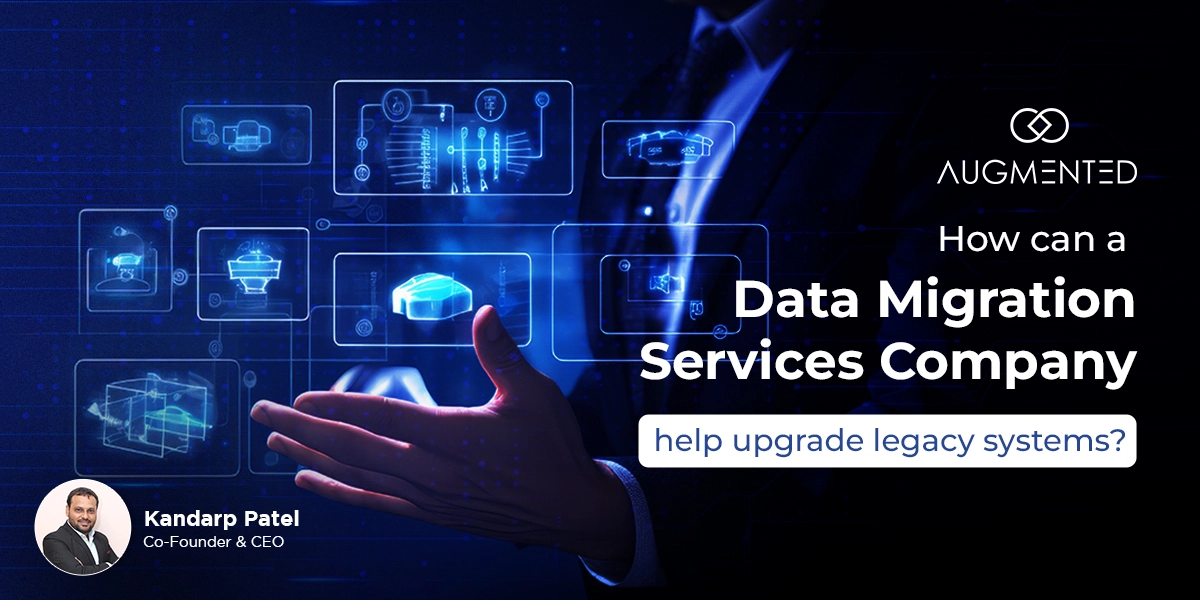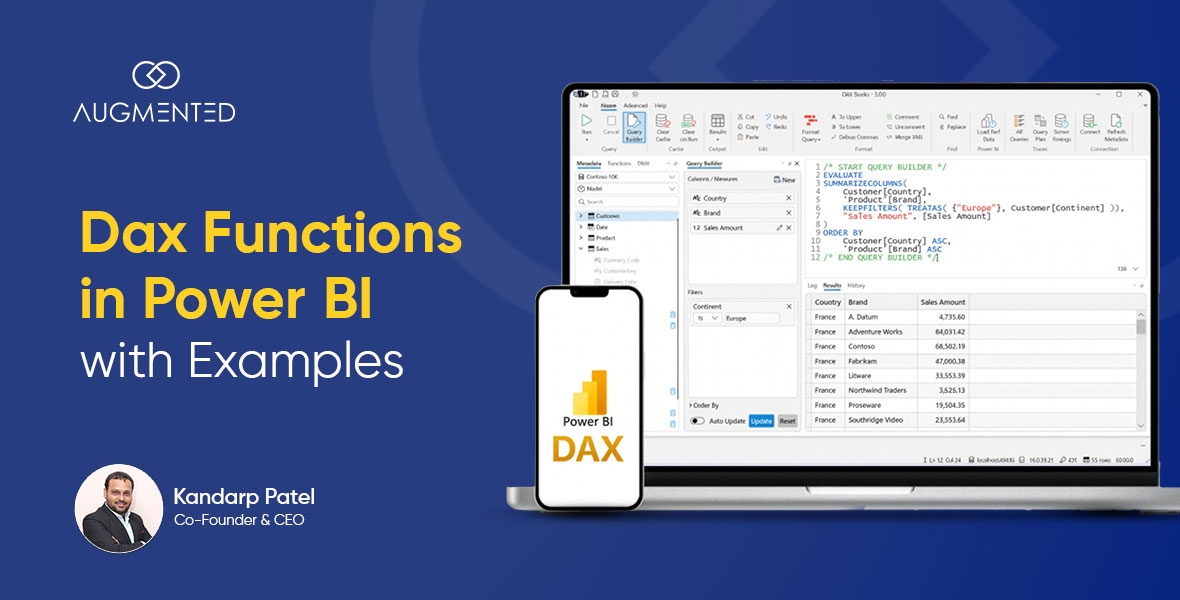Are you still relying on your outdated systems? Are they costing you more than they should?
For many, outdated systems, once cutting-edge technology, have now become a costly burden. Security vulnerabilities and high maintenance costs are just the beginning.
Moreover, legacy systems are like addictions; you know you need to change, but you're unsure how.
Well, you don't have to navigate through these digital shackles alone. Consult a data migration services company and navigate toward upgrading your legacy systems.
Ready? Let's get started.
What are Legacy Systems?
A legacy system is an outdated computing system, software or hardware that businesses and organizations continue to use. It uses older technologies that prevent it from interfacing with newer systems. These systems include:
- Computer hardware
- Software applications
- Files and formats
- Programming Languages
Example of a Legacy System
The mainframe computer is one of the best examples of legacy systems. It was once the backbone of computing. Although it was one of the most reliable and secure systems, it lacked scalability and a user-friendly interface.
However, many banks and government agencies still rely on it for specific tasks. While these systems are the foundation for technologies, their limitations cannot be ignored. Here is when legacy data migration becomes crucial.
Let’s understand what that is and explore it in detail.
What is Legacy Data Migration?
As the name suggests, legacy data migration is migrating your data and files from an older, outdated or legacy system to a more modern (new) system, such as the cloud.
For Example,
A business or institution decides to migrate its entire database from a mainframe computer (which they have been using for years) to a more modern platform. The datasets that can be migrated from one system to another may include:
- Customer records
- Financial information or data
- Product or service information
- Historical data/ archives
More modernizing solutions help boost business performance and help businesses work more efficiently. However, many enterprises are still clinging to using these old systems despite many challenges.
Let’s see how these legacy systems are not apt for today’s businesses.
How are Legacy Systems Harming Your Business?
Is your data exploding at an alarming rate? Are you able to handle all your business processes with agility and efficiency? Are your employees still stuck with spreadsheets to update everyday data?
If yes, then it’s high time for a change! Legacy systems are hindering your business and slowing you down in the rat race of the growing business landscape.
How?
1. Costly
How much do you spend on maintaining your legacy systems? Did you know that outdated systems can increase your maintenance costs by nearly 15% annually?
It is true that opting for legacy application migration may cost a little, but the hard truth is that the cost of your outdated systems can be more staggering as they age. So, the earlier you make the switch, the better.
2. Time-Consuming
Legacy systems become like a tangled mess of weeds over time. As your system and data become more complex, an added layer of complexity messes up the entire system.
Maintaining, updating, and using the data and information through these systems becomes a nightmare. It is time-consuming, potentially risky, and difficult for a growing organization.
3. Risky
As technologies modernize, so do hackers and cybercriminals. Your legacy system with the security of the ‘bygone era’ is heaven for cyber criminals in this era.
Thus, you are opening gates for data breaches, financial losses, and reputational damage with these outdated systems.
4. Scalability
Do you think your legacy system can adapt to the changing market demands? Even if it can, these outdated systems will lead to performance degradation and discrepancies between different systems.
Moreover, outdated coding architecture of legacy systems leads to frequent errors, bugs and glitches. Surely a headache for your IT team and a loss to your overall business.
The rise of Industry 4.0 has led businesses to shift to more adaptable, agile and modern solutions. Whether leveraging artificial intelligence or legacy application migration, businesses are updating their infrastructure with the modern world. And so should you.
Why Should Your Business Migrate?
With all the above limitations in mind, are you left wondering if you can overcome these challenges? If not, here are some stats that would make you.
- More than 50% of surveyed companies listed increased security and improved efficiency as their main drivers for modernizing their legacy applications and data in 2023.
- Globally big data market is expected to expand to $103 billion by 2027.
- Businesses lose $85 billion repairing technical issues caused by faulty code, sometimes well-written but deemed legacy.
- Organizations with the highest percentage of cloud apps saw the greatest income gain from new goods. Their change percentage was roughly 41%.
- According to Accenture, migrating to the public cloud can cut your Total Cost of Ownership (TCO) by up to 40%.
With the digital revolution, the risks of using outdated systems are beyond regular updates and buffering wheels. Slow legacy systems lack the latest compliance requirements, are costly and are limited to experts in legacy programming languages, such as COBOL.
Therefore, migrating to a more complex and up-to-date system is a boom to your business. So, are you ready to migrate with the thriving data migration market of around $10.9 billion?
Not sure how? Read below.
How Can a Data Migration Service Help?
Data migration, though a groundbreaking escape to legacy systems, comes with its own set of challenges. Data migration needs to be a strategic move as most parts of it are tricky. With difficulties such as downtime and data breaches, data migration planning is of utmost importance.
And to help you do so, data migration services companies or migration experts can help. The experts guide you through the entire migration to ensure a smooth and secure transition in two ways.
1. Help Perform the Necessities of Legacy Data Migration
Nobody wants to leave their valuable data behind. Imagine post-migration, your employee comes running and says, “Sorry for the delay, but we forgot to load the files for 10 customers.”
Difficult to even imagine, indeed.
Data migration is not a simple ‘copy-paste’ or ‘export-import’ task, which is why data migration services companies help make the process a breeze. They first perform the following 4 tasks for the legacy data migration.
- Completing a Data Audit
It's like cleaning your home before you move to a new place. The experts help eliminate existing errors, inconsistencies, and duplicates in your data. A data audit ensures that you migrate only the most crucial data. Data cleaning saves time and resources and streamlines the process.
- Ensuring Data Security
Professionals ensure that your data is moved with utmost security. They use security protocols and best security practices, such as access control.
Moreover, they backup your entire datasets before the move. Backing up your data is crucial because data migration is vulnerable to data loss and discrepancies.
- Making Realistic Estimates
Data migration is easier said than done. It has to be a well-thought-out plan, considering all its challenges and then making realistic estimates.
Experts ensure that they take care of time, money and resources before a migration move.
- Establishing the Process
Legacy data migration isn’t just a move, it’s more about laying the groundwork. Before you make the switch, the experts help you understand about the entire migration process.
Moreover, they are equipped with the right tools and expertise and have clear goals in mind to make your migration a success.
Once the stage is set, the experts move to the next step, which is performing data migration. As simple as it may sound, actually making the big move also requires certain planning.
2. Help Perform Data Migration
The data migration services company helps you from facing the headwinds of data loss, downtime, and other migration difficulties. Here’s how they do it.
- Create a Data Migration Strategy
The experts first make a plan. They use data migration solutions to strategize each step of the process. Each step is micro-managed with questions such as:
- What should be done?
- What system will be covered?
- What aspects of the business will be affected?
- Which system or tools should be used for migration? and many more.
Every step of the migration depends on business to business. Based on individual business requirements, the experts plan their data migration strategy.
- Perform Data Backup
There is no guarantee to anything when it comes to data migration. Even the most expert team may encounter unexpected turns during the move.
Thus, to avoid mishaps, such as missing data or data duplication, data back-ups are performed by the professionals before the move.
- Prepare the Environment
Imagine moving to a data dump. What if you make the move but the system isn't up and running? What if the new system isn't apt enough to handle all your legacy data?
Data migration experts help you choose the right tool or system that best suits your data and business requirements. They won't let you settle for less and ensure that the new system is prepared before the move.
- Test the Process
Before hitting the big migration button, the experts will perform a mini-migration. Think of it like a test drive before you buy a new car. They help identify all the potential errors and make sure that nothing is missed before the migration.
Moreover, they will get rid of all the bottlenecks, if any. This will prevent major migration headaches, such as downtime and data loss.
- Migrate the Data
This is where all the execution happens. You sit back and relax, while the team of experts perform the migration for you.
They closely monitor the entire process, keep clear communications, and inform stakeholders about disruptions if any. Finally they check the new system for safe, secure, and complete data.
- Monitor the System post-migration
Finally, the legacy data migration you have been waiting for years is now complete. But, that’s not all. The experts are going to perform regular data audits. They review, monitor, and send feedback at regular intervals.
Seems a lot? Maybe? Maybe not! But the good news is that you don’t have to actually do any of that. A data migration services company can handle all of this for you.
So why wait?
Hire Experts Today
You might feel stuck between moving to the modern techs and departing from your year old legacy systems (which you and your team are used to now.)
But, change is the only constant. And for the same reasons you should consider moving from your outdated systems to a new one. We at Augmented Systems are there to help you at every stage of it. Feel free to contact us today.





